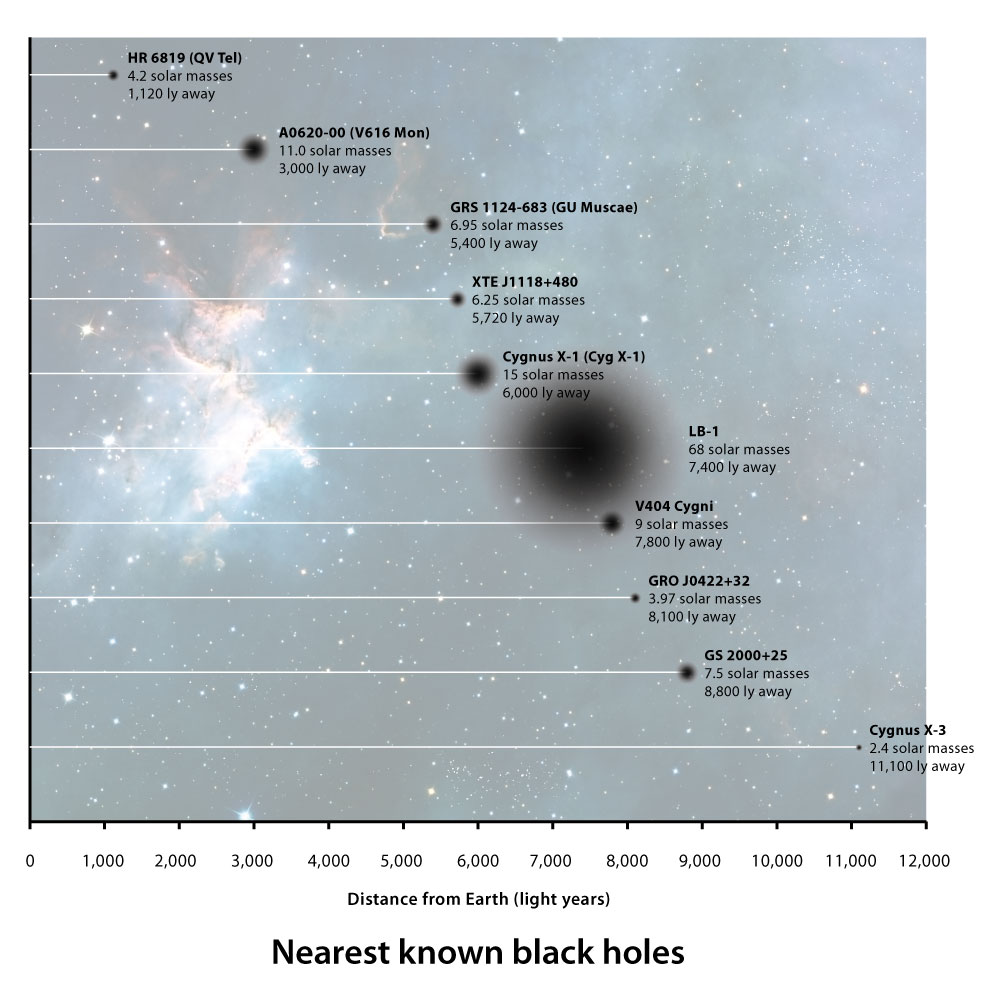
16th May 2020 Astronomers find nearest known black hole Astronomers report finding what is likely a black hole about 1,120 light years away in the two-star HR 6819 system.
A team at the European Southern Observatory (ESO) has found the nearest known black hole. The object is 1,120 light years from Earth, which is relatively close in galactic terms. The previous closest was 3,000 light years away. The system – HR 6819 – originally thought to be a single star, actually consists of three objects: two large, hot B-type stars and the black hole itself weighing in at 4.2 solar masses. This video shows the orbital configuration: an inner binary pair, consisting of a B-type and the black hole (orbit indicated in red), and an outer B-type star orbiting around them. While the black hole cannot be seen, HR 6819 is visible in the night sky as a bluish-white star, and is therefore the first known black hole-containing system to be visible to the naked eye.
The hidden black hole in HR 6819 is one of the very first stellar-mass black holes found that do not interact violently with their environment and, therefore, appear truly black. But the team could spot its presence and calculate its mass by studying the orbit of the star in the inner pair. They achieved this using a special instrument called the Fiber-fed Extended Range Optical Spectrograph (FEROS) installed at the MPG/ESO 2.2-metre telescope located at ESO's La Silla Observatory in Chile. La Silla confirmed that the inner star orbits an unseen object every 40 days, with the second star remaining at a large distance from this binary pair. "The observations needed to determine the period of 40 days had to be spread over several months," explains Dietrich Baade, Emeritus Astronomer at ESO and co-author of a paper that appears in the journal Astronomy & Astrophysics. "This was only possible thanks to ESO's pioneering service-observing scheme under which observations are made by ESO staff on behalf of the scientists needing them." "An invisible object with a mass at least four times that of the Sun can only be a black hole," concludes Thomas Rivinius, co-author and ESO scientist who is based in Chile. To date, only a couple of dozen black holes have been confirmed to exist in our galaxy – but the ESO team believes there are likely hundreds of millions scattered around the Milky Way. Finding one in a triple system so close by suggests we are seeing just "the tip of an exciting iceberg," concludes Baade.
Comments »
If you enjoyed this article, please consider sharing it:
|







